Fat Transfer in Germany
Search and Compare the Best Clinics and Doctors at the Lowest Prices for Fat Transfer in Germany
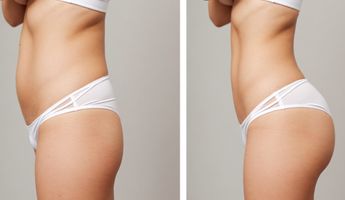
Find the best clinics for Fat Transfer in Germany
With Medijump you can browse 9 facilities offering Fat Transfer procedures in Germany. The cheapest price available is $1,601 in Berlin. And for the cheapest price globally, prices start from $167 in Thailand.
Fat Transfer in Berlin
Price: $ 1,601
Thailand offers the best prices Worldwide
Price: $ 167
From 13 verified reviews
NANCY J., 08 September 2020
I felt in good hands with Dr Omar, who works with great sterility and accuracy. After I was not satisfied with the result, the treatment was carried out again free of charge on goodwill. That made me feel good that they are very interested in treating satisfied patients.
From 70 verified reviews
Mirca Lotz, 15 September 2020
Great clinic nice staff, definitely recommended
From 163 verified reviews
nuster, 22 September 2020
We have been to the hospital 3 times because of our daughter.The first time was the birth, labor started early which ultimately led to a premature birth (6 weeks too early). My wife was treated very well on the ward, but the food was really bad ... I eat pretty much everything and I am not very squeamish, but the food was really below average.Since our little one was premature and had difficulties starting, she had to be ventilated intensively and with oxygen in the incubator.The sisters were all nice and competent, the approach to our child was great (changing diapers, wearing the right ones, etc.)Really recommend it.At about 1.5 years our little one had suspected Chassaignac paralysis ... Truly no acute emergency (but in need of treatment) and something seems to forget many patients ... You are not always a life-threatening emergency !!Waiting time a good 4 hours, treatment was good.With about 2.3 years new suspicion of a Chassaignac paralysis, same as before. Arm in position and you shouldn't touch the arm. Waiting time about 30 minutes, again good and fast treatment and again about 20 minutes waiting for a doctor called.A recommended clinic.And if others understood what an emergency room is and what you go with, almost all 1 star ratings would be dropped
From 147 verified reviews
conny Schmelzer, 13 September 2020
Kudos to the outpatient surgery station, everything was explained, very nice team, I felt very well looked after. I was met by very friendly nurses at Ward 15. The further care on the ward is also very, very pleasant.
From 163 verified reviews
Birget Wendt, 21 September 2020
Hallo liebes Team der Helios Klinik, ich möchte mich ganz herzlich bei der Dialyse und der Stadion P 5 bedanken. Ein besonderen Dank gehen an Herrn Dr. Tuerk - leider nicht mehr in der Klinik, Frau Dr. Vorberger, Frau Dr. Schmidtchen, Frau Dr Lembcke,Herrn Dr. Wolkewitz, Schwester Antje, Schwester Carina. Ich sage 1000 Dank - ich wart Spitze - und ich glaube eine kleine Gehaltserhöhung - würde gut zu passen. Zwinka, zwinka. Es gibt natürlich auch die Schattenseite - sehr arrogant - die müssen aufpassen das die nicht über ihre eigenen Füße stolpern. Professor Dr. Nürnberg und Frau Dr. Haefner. Setzen - die Note 6 wird erteilt. Die Beiden müssen noch viele Seminare der Menschlichkeit und wie gehe ich mit Angehörigen von sehr schwer kranken Menschen um. Bleibt alle gesund. Vielen lieben Dank - B. Wendt
From 3 verified reviews
Katrin Zug, 13 May 2019
I had opted for a liposuction Feb. 2019 (area butt, legs) at Fr Dr Kleinschmidt. I received a warm welcome from the nurse on the day of surgery. I had a tranquilizer tablet before surgery and so everything was a bit more relaxed as I opted for a local anesthetic. You still have to be brave, but if you really want something, you can do it. Now and then you have felt a tweak. The sister and also Fr Dr Kleinschmidt have always inquired between, if everything is OK. We talked very nicely at the surgery and therefore the time went much faster. Then I got my pants on. My friend picked me up! Absolutely a painkiller. take, then it is bearable. The next day I had to follow-up, wound control and new associations. I was ordered by the week to check if everything healed well. I can only recommend Fr Dr Kleinschmidt!
Praxis Dr. Moheb, located in Holstenstrasse, Hamburg, Germany offers patients Fat Transfer procedures among its total of 14 available procedures, across 3 different specialties. Currently, there's no pricing information for Fat Transfer procedures at Praxis Dr. Moheb, as all prices are available on request only, whilst the national average price is approximately $2,301. All procedures and treatments are undertaken by the lead specialist at the Hospital, and they are accredited by VDÄPC - Vereinigung der Deutschen Ästhetisch-Plastischen Chirurgen
S-thetic Lounge Cologne, located in Grosse Brinkgasse, Cologne, Germany offers patients Fat Transfer procedures among its total of 40 available procedures, across 5 different specialties. Currently, there's no pricing information for Fat Transfer procedures at S-thetic Lounge Cologne, as all prices are available on request only, whilst the national average price is approximately $2,301. All procedures and treatments are undertaken by just a small team of specialists, with 3 in total at the Hospital, and they are accredited by DGPRÄC - Deutsche Gesellschaft der Plastischen, Rekonstruktiven und Ästhetischen Chirurgen
Dr Holger Klose, located in Bismarckstrasse, Berlin, Germany offers patients Fat Transfer procedures among its total of 20 available procedures, across 1 different specialties. Currently, there's no pricing information for Fat Transfer procedures at Dr Holger Klose, as all prices are available on request only, whilst the national average price is approximately $2,301. All procedures and treatments are undertaken by just a small team of specialists, with 3 in total at the Hospital, and they are not accredited by any recognized accreditations institutes
- Home
- Germany
Compare Before & After Photos of _procedure_photos.phpFat Transfer


Front view
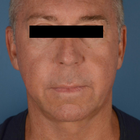
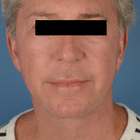
Front view
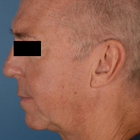
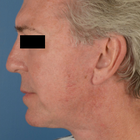
Full-side view
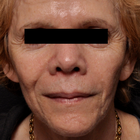
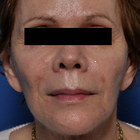
Front view
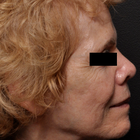
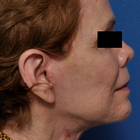
Full-side view
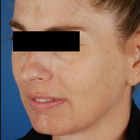

Half-side view
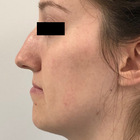
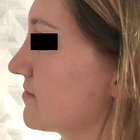
Full-side view
WHY US?
At Medijump, we're making medical easy. You can search, compare, discuss, and book your medical all in one place. We open the door to the best medical providers worldwide, saving you time and energy along the way, and it's all for FREE, no hidden fees, and no price markups guaranteed. So what are you waiting for?

Free

Best Price

Widest Selection

Risk-Free
What you need to know about Fat Transfer in Germany
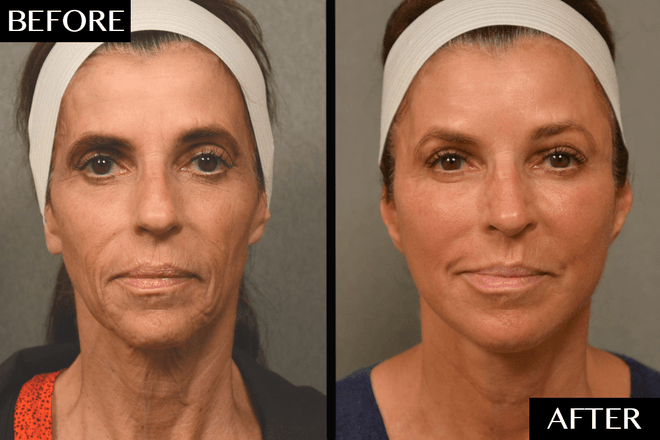
Also known as Fat Harvesting, Fat Grafting, Fat Injections, Lipofilling, Fat Transfer is a cosmetic surgery involving the movement of fat from one part of the body to another. During this procedure, your own fat will be used to fill in irregularities and grooves, primarily in the face, around the temples, eyes, chin, and lips. It can also be used to enhance the appearance of the breast, feet, hips, buttocks, and hands. The procedure is now a well-established technique that was perfected in the early nineties.
Some of the most common aesthetic indications for undergoing fat transfer / lipofilling include sunken cheeks, the disappearance of fat from the cheekbones, deep grooves running from the nose to the corners of the mouth, and in some instances of lines between the lower eyelids and the cheek. It is also one of the most common methods used for lip enhancement. In addition, lipofilling can be used to smooth out all types of irregularities such as those resulting from poorly performed liposuction or injuries.
The necessary fat is obtained by a limited liposculpture through one or several 3 to 5 mm incisions. It is normally taken from the abdomen or inner thigh. The aspirated fat is processed by centrifuging, filtering or rinsing. Pure liquid fatty tissue ready for injection is the result. The fat is then injected where needed. The fat is evenly distributed into the area by injecting minute amounts in the tissues so that the injected fat is well surrounded by healthy tissue. This ensures that the transplanted fat remains in contact with the surrounding tissues that must supply it with oxygen and nutrients.
What is the cost of Fat Transfer in Germany?
Being aware of the costs linked to the Fat Transfer pricing in Germany is vital for efficient budgeting and organizing. Pricing can differ greatly conditional to numerous things, such as the intricacies of the operation, the quantity of fat transferred, the surgeon's skill level, and the clinic's place. Conducting meticulous research and obtaining diverse quotations from multiple providers before settling is advisable.
Bear in mind, the Fat Transfer is generally deemed a vanity procedure, thus, it is not typically insured by health insurance providers. Exceptions may exist if the operation holds a medical necessity, like reconstruction operations post-mastectomy or injury. It's always advantageous to liaise with your insurance provider to grasp the specific details of your coverage and to ascertain the possible out-of-pocket expenses you could face.
What does a Fat Transfer Procedure Involve?
Consisting of two completely different procedures, extraction of fat called liposuction and transfer of fat through injections. Both the donor and recipient sites are sedated by giving local anesthesia. After this, fat is harvested through injections from the sites where adipocytes are tightly packed, such as the buttocks or abdomen. However, the fat present in lateral sides of the thighs and lower abdomen is also good fat as it contains a larger concentration of adipose-derived stem cells. These stem cells promote angiogenesis and adipogenesis at the recipient site - multiple injections are used to do this.
The material extracted is centrifuged, sedimented and filtered for excessive liquid and pure fat cells are injected just below the skin. This is the most difficult step of fat transfer to inject fat evenly in different layers of recipient tissue. Cannulas and syringes of different sizes are used to do this. In the case of breast augmentation, multiple fat injections are applied to the breasts. It is ensured that these fat cells are injected near a blood vessel so the cells don't die due to a lack of nutrition. Proper nutrition is needed for the cells to survive and grow.
What are the types of Fat Transfer?
Facial fat transfer: If you have facial creases, such as laugh lines, smile lines, and crow’s-feet, fat can be removed from your abdomen, thighs, or other areas and be injected into your face. Acne scars and sunken areas of the face, lips, and cheeks can also be filled in. Your plastic surgeon can even use grafted fat to minimize lines between your nose and mouth, correct skin depressions or indentations and minimize forehead wrinkles. (Facelift, Lip Augmentation)
Breast augmentation: Fat transfer breast augmentation essentially uses liposuction to take fat from other parts of your body and inject it into your breasts. This is a breast augmentation option for women who are looking for a relatively small increase in breast size and would prefer natural results.
Breast implants plus fat grafting: If your breast shape needs optimizing during a breast implant procedure, fat grafting can be useful. If you have residual breast irregularities after undergoing breast augmentation with implants, the irregularities can be filled in with fat to produce a smooth contour and an optimal shape.
Breast reconstruction with fat grafting: If you have breast defects following lumpectomy for breast cancer, fat grafting is an effective method for filling in these defects. Fat grafting is also an option for total breast reconstruction following mastectomy; however, to achieve sufficient breast volume, this is usually a multistage process that requires at least two to four sequential fat grafting procedures.
Buttock augmentation with fat grafting: Many people who desire a fuller, more rounded buttock will opt for a “Brazilian butt lift” which uses fat transfer to provide a more curvaceous buttock without the use of an implant. Liposuction is commonly used to both sculpt the surrounding area and collect the autologous fat to be injected.
Hand rejuvenation with fat grafting: Fat grafting into your hands is effective for adding volume, “plumping up” wrinkled areas, covering underlying vessels and tendons and improving the quality of your skin over time.
How Long Should I Stay in Germany for a Fat Transfer Procedure?
As an outpatient procedure, just a couple of hours are needed depending upon the amount of fat that is to be removed and transferred. You can leave the hospital on the same day or sometimes an overnight stay is advised, and in some cases, more than one session is needed. You should stay in Germany for at least 10-14 days after being discharged for regular check-ups. During this period, your health and results of the procedure are monitored by your surgeon.
The precise duration of your visit will primarily hinge on your personal situation, including the scope of your surgery, your total health condition, and your body's healing capability. It is always wise to engage in open dialogue with your surgeon about the anticipated period of your stay.
What's the Recovery Time for Fat Transfer Procedures in Germany?
The recovery period is different for different areas of your body. After a buttock augmentation, you have to sleep on your stomach or keep standing for at least 4 weeks. Because sitting can dissipate the fat. The shape of the augmented area might appear irregular initially, it will get a proper contour after some time. There will be moderate swelling and bruising at both the donor and the recipient sites for 2 weeks. Your face might appear fat and plump after fat grafting but it will settle down before long. You might suffer from moderate pain for a few days. Pain killers are given to deal with this. Almost 6 months are required for the results to fully show.
What sort of Aftercare is Required for Fat Transfer Procedures in Germany?
Things to consider:
- Regular checkups after being discharged.
- Take your medicines regularly, as and when prescribed by the doctor. Avoid self-medication.
- Follow a healthy diet plan for a better recovery.
- Ensure the presence of a friend or family member with you in the early few days to help you with house chores.
- Avoid excessive movement during the early few weeks and do not sit on your butts in case of butt fat transfer because it can dissipate the fat rendering it ineffective.
- Look for the signs of blood clot formation, excessive bruising, etc. Visit your doctor immediately if you find any abnormal thing.
What's the Success Rate of Fat Transfer Procedures in Germany?
When exploring any health-related process, the success ratio becomes a key element to consider. The efficiency of the Fat Transfer in Germany hinges upon various aspects such as proficiency and expertise of the surgeon, the health condition of the individual, and compliance to the guidelines of care after the operation. Fat transfer has been gaining fame due to its dual advantage of eliminating unnecessary fat from the body and accentuating preferred areas.
The outcomes of Fat Transfer show promising persistency. Many people have enjoyed pleasing results that lasted for a long span of time. Fat transfer for breast augmentation has increased by 76% in 2016 while for butt augmentation, a 26% increase has been witnessed. This approach also enjoys a commendable success ratio when it comes to patient satisfaction, with some researches revealing satisfaction percentages reaching up to 85%. It's however crucial to hold realistic anticipations, since factors like age, weight changes, and general health can sway the results. Regular consultations with your health provider are crucial for monitoring improvements and promptly dealing with any arising issues.
Are there Alternatives to Fat Transfer Procedures in Germany?
Fat grafting is an expensive technique as it consists of 2 different procedures. Following are some alternatives to it:
- Dermal fillers: these are given through injections to make your skin look plump. Sunken cheeks can be effectively corrected through this technique.
- Breast implants: for small breasts, implants are an alternative to fat grafting. A silicone implant is inserted into your breasts to increase their size.
- Breast reconstruction: cancer patients, who went through mastectomy can get their bust back by reconstructive surgery.
- Tummy tuck: This procedure tightens your abdominal muscles giving them a tighter and flattened appearance.
- Liposuction: excessive fat is removed from different parts of your body through liposuction. Your tummy looks flatter and you look smarter after this procedure.
- Cheek augmentation: in this technique, silicone implants are inserted into your cheeks to make them look bigger and plump.
All of the techniques mentioned above involve only one procedure.
What Should You Expect Before and After the Procedure
Understanding the process before and after undergoing the Fat Transfer is crucial to easing worries and ensuring a successful outcome. Before the process, your doctor will provide in-depth guidance on the requisite preparations. This might involve abstaining from certain drugs or supplements that may increase bleeding, and possibly, fasting if general anesthesia is planned. Thorough medical check-up and health evaluation will be performed to lower any prospective risks. In particular instances, your doctor may advocate lifestyle alterations such as quitting smoking because it can hinder the recovery process.
Following the Fat Transfer, patients might have minor swelling and bruising, but these usually recede in a few weeks. Aches and discomfort can be effectively controlled with prescribed medicine. Though recovery time varies among individuals, most return to work and resume everyday activities within one to two weeks. Your doctor will provide detailed instructions for a post-procedure care routine, possibly involving wearing pressure garments and regular review meetings to track healing and progress.
What are Potential Risks of Fat Transfer?
Possible complications can include:
- Blood clot formation, infections, and ulmonary embolism leading to the failure of fat grafting
- Absorption of the transferred fat by the body leading to asymmetry or irregularities in the treated area
- The formation of oil cysts or calcification which can interfere with radiological imaging
Whilst the information presented here has been accurately sourced and verified by a medical professional for its accuracy, it is still advised to consult with your doctor before pursuing a medical treatment at one of the listed medical providers
No Time?
Tell us what you're looking for and we'll reachout to the top clinics all at once
Enquire Now

Popular Procedures in Germany
Prices Start From $26

Prices Start From $113

Prices Start From $208

Prices Start From $275

Prices Start From $758

Prices Start From $5

Recommended Medical Centers in Germany for Fat Transfer

- Interpreter services
- Translation service
- Religious facilities
- Medical records transfer
- Medical travel insurance
- Health insurance coordination
- TV in the room
- Safe in the room
- Phone in the room
- Private rooms for patients available

- Interpreter services
- Translation service
- Religious facilities
- Medical records transfer
- Medical travel insurance
- Health insurance coordination
- TV in the room
- Safe in the room
- Phone in the room
- Private rooms for patients available

- Interpreter services
- Translation service
- Religious facilities
- Medical records transfer
- Medical travel insurance
- Health insurance coordination
- TV in the room
- Safe in the room
- Phone in the room
- Private rooms for patients available

- Interpreter services
- Translation service
- Religious facilities
- Medical records transfer
- Medical travel insurance
- Health insurance coordination
- TV in the room
- Safe in the room
- Phone in the room
- Private rooms for patients available

- Interpreter services
- Translation service
- Religious facilities
- Medical records transfer
- Medical travel insurance
- Health insurance coordination
- TV in the room
- Safe in the room
- Phone in the room
- Private rooms for patients available

- Interpreter services
- Translation service
- Religious facilities
- Medical records transfer
- Medical travel insurance
- Health insurance coordination
- TV in the room
- Safe in the room
- Phone in the room
- Private rooms for patients available

- Interpreter services
- Translation service
- Religious facilities
- Medical records transfer
- Medical travel insurance
- Health insurance coordination
- TV in the room
- Safe in the room
- Phone in the room
- Private rooms for patients available

- Interpreter services
- Translation service
- Religious facilities
- Medical records transfer
- Medical travel insurance
- Health insurance coordination
- TV in the room
- Safe in the room
- Phone in the room
- Private rooms for patients available

- Interpreter services
- Translation service
- Religious facilities
- Medical records transfer
- Medical travel insurance
- Health insurance coordination
- TV in the room
- Safe in the room
- Phone in the room
- Private rooms for patients available

- Interpreter services
- Translation service
- Religious facilities
- Medical records transfer
- Medical travel insurance
- Health insurance coordination
- TV in the room
- Safe in the room
- Phone in the room
- Private rooms for patients available
Fat Transfer in and around Germany
About Germany
Germany, a titan in Central Europe and a vital constituent of the European Union, enjoys the reputation of having the finest healthcare system across the continent. Medical tourists often choose Germany due to its unrivaled service quality over cost, with Fat Transfer procedures being the most in-demand.
Prices here exhibit a significant hike when compared to the neighboring countries of Poland and Hungary. Germany, despite housing just two JCI accredited facilities, places considerable trust in its local accreditation bodies.
This includes institutions such as the German Institute for Standardisation, the Telemedicine for the Mobile Society (TEMOS), and the Cooperation for Quality and Transparency in Healthcare (KTQ-GmBH). The language barrier is virtually non-existent as the majority of the doctors and medical staff exhibit proficiency in English. Beyond the capital city of Berlin, Munich, Hamburg, and Frankfurt are popular delectations among medical tourists.
Popular Parts of Germany
Home to an approximate 83 million inhabitants, Germany stands tall as the second most populated nation in Europe. The country presents a fascinating blend of deep-rooted history and cutting-edge technology. Visitors can pay their respects at numerous WWII memorials and museums, bask in the allure of the country's picturesque natural landscapes, or surrender to the tantalizing array of culinary delights that Germany has to offer. Truly, Germany embraces diverse interests, ensuring every traveller finds something to cherish.
- Berlin is Germany’s capital city. It is a vibrant city with diverse sights to see. Visit the glass dome of The Reichstag, take a walk through Brandenburg Gate, be inspired by Berlin Cathedral, or wander around a UNESCO World Heritage Site: Museumsinsel (Museum Island).
- Munich is home to a beautiful historic city center, futuristic drives, and outdoor fun. For a historical tour, tourists can travel to the Church of St. Peter, the city’s oldest parish church dating back six centuries. For a car lover, visit the BMW Museum to learn more about the history of BMW cars and motorcycles. For outdoor activity, tourists can surf at the Eisbach wave on the Isar river.
- Hamburg provides refreshing sea air. The city was labeled as “the gateway to the world” because it is a center of international trade. As the city revolves around water, tourists should stroll around the harbor, lay around beside the Elbe, or sail on the Outer Alster lake.
- Frankfurt am Main is the financial and business hotspot of Germany. Although it is packed with skyscrapers, the city still offers amazing architecture, a piece of history, and even a large green space in the city forest.
- Hanover calls itself as the “EXPO City” because it hosts several of the biggest exhibition in the world. The city also boasts an astonishing blend of modern and ancient. There are a number of museums and galleries, a large zoo, and innovative street art for tourists to explore.
Weather and Climate in Germany
The four distinct seasons make Germany a year-round destination for tourists. The summer starts in June and ends in August. The average temperature is 24 °C, sometimes even as high as 30 °C. People tend to enjoy outdoor activities during this season. This is also the most popular time to visit and peak travel season, so prices can be higher than usual.
Autumn graces Germany in the months of September and October. During this time, the weather is comfortably warm, closely mirroring that of summer. However, by mid-November, a notable drop in temperatures can be expected. This period is particularly popular among tourists owing to the much-celebrated Oktoberfest.
Winter in Germany, which runs from December through February, can be chilling with temperatures dropping to as low as -10°C. Yet, the festive vibrancy brought on by the Christmas season often offsets the cold. Visitors planning a trip during winter must ensure to pack ample warm clothing for a comfortable experience.
Spring in Germany marks the delightful bloom of cherry blossoms and typically spans from March through May. The transition into this season often ushers in a rapid rise in temperatures, making it a beautiful and warm period to visit.
Getting around in Germany
Frankfurt Airport is the largest airport in Germany. The airport serves domestic flights as well as international flights. It connects the country with almost every country in the world. The airport is the hub for Condor and Lufthansa. It also serves budget airlines such as Ryanair, Euro wings, Wizz Air. Düsseldorf International Airport and Munich Airport also receive their shares of international flights.
Train, bus, and taxi are the best options to get to the city center from Frankfurt Airport. A trip by train usually costs 4.65 EUR and takes around 40 minutes. Train tickets need to be punched, otherwise, you can get a 50 EUR fine. The bus costs 4.35 EUR and takes around 30 minutes. Buses that take tourists to the city center are No. 61, 77, 72, 58, 62, N81 and N7. Taxis are not very cheap, it will cost around 25 EUR and will take approximately 20 to 30 minutes to the city center.
As the creator of the first highway system, Germany has some of the best public transportation in the world. The public transportation is integrated with one ticket that gives tourists access to buses, trams, U-Bahn trains, and S-Bahn trains. A one-way fare starts from 2.90 EUR. It is better to get a one-day unlimited pass for 7 EUR or three days for 17 EUR.
Train travel is very efficient and affordable. Germany rail system has both high-speed trains and regular trains. High-speed trains are very fast but much more expensive. It’s advised to book train tickets in advance. Buses are the most cost-effective way to get around Germany although it is not as efficient as the train. Buses here are comfortable with air-conditioning and rest stops.
Taxis in Germany are expensive. All taxis are metered and start with a base fare of around 3.70 EUR. There is no Uber in the country, but tourists can use the MyTaxi App. If you want to get around the city, the best way is to rent a bicycle. Most cities are equipped with well-marked bicycle lanes.
Tourist Visas in Germany
Germany extends a cordial welcome to citizens from numerous nations, offering them visa-free entry. This privilege applies to travelers from Australia, New Zealand, Canada, Israel, Japan, Poland, the United States, and Switzerland, who are invited to stay for up to 90 days without the need for a visa.
Moreover, as a member of the European Union (EU), Germany adheres to the policy of open borders with its fellow EU nations. Consequently, EU citizens can freely travel to and enter Germany without any requirement for a visa. This ease of movement provides an added advantage for those wishing to visit Germany, whether for business, leisure, or medical purposes.
Citizens of other countries need a Schengen Visa. The application for a Schengen Visa must be filed with the embassy of the country of your primary destination. It is best to always check the requirements for Germany Visa Application before applying.
Additional Information
- Local Currency: the local currency is the euro (EUR). 1 USD converts to 0.94 EUR.
- Money & Payments: ATMs are easily available across the country. The easiest way to obtain cash is to use an ATM linked to international networks. Credit cards are not widely accepted in Germany, so always make sure to carry some cash. Some hotels, shops, and restaurants will accept credit cards. Tipping 1 EUR to room cleaners or porters is common. Most people add 5% or 10% tip in restaurants and bars. Tourists can tip about 10% to taxi drivers.
- Local Language: The official language is German. It is nice to know a little German to show respect. Many Germans in major cities and tourist areas will know a little English.
- Local Culture and Religion: 57% of Germany’s population follows Christianity, making it the largest religion in the country. Islam is the second largest religion. Buddhism, Judaism, Hinduism are also practiced.
- Public Holidays: Germany celebrates Christian religious holidays. The country hosts several festivals such as Maibaumaufstellung every 1st May and Oktoberfest in October.
Popular Searches
- Plastic Surgery in Thailand
- Dental Implants in Thailand
- Hair Transplant in Thailand
- Breast Augmentation Thailand
- Gastric Sleeve in Thailand
- Gender Reassignment Surgery in Thailand
- Laser Hair Removal in Bangkok
- Botox in Bangkok
- Dermatology in Bangkok
- Breast Augmentation in Bangkok
- Coolsculpting in Bangkok
- Veneers in Turkey
- Hair Transplant in Turkey
- Rhinoplasty in Turkey
- Stem Cell Therapy in Mexico
- Rhinoplasty in Mexico
- Liposuction in Mexico
- Coolsculpting in Tijuana
- Rhinoplasty in Korea
- Scar Removal in Korea
- Gastric Sleeve in Turkey
- Bone Marrow Transplant in India
- Invisalign in Malaysia
- Plastic Surgery in the Dominican Republic
- Tummy Tuck in the Dominican Republic
- Plastic and Cosmetic Surgery in Poland
- Rhinoplasty in Poland
- Hair Implant in Poland
- Dental Implants in Poland
- IVF in Turkey








